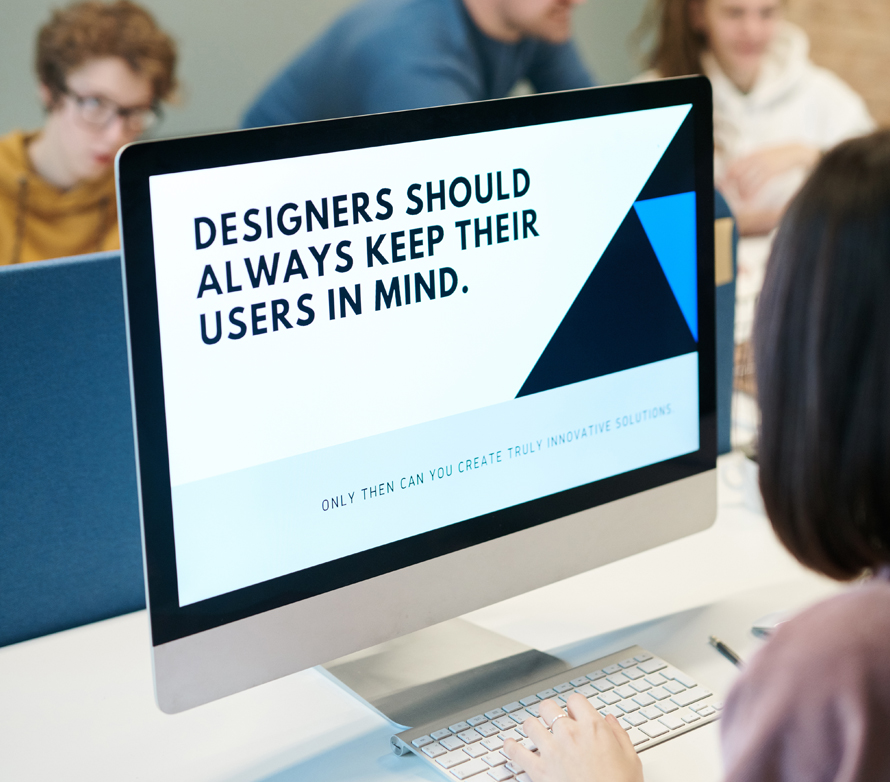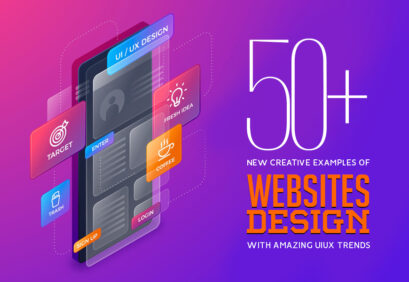User interface (UI) and user experience (UX) design are now critical components in assuring the success of digital goods and services. However, inclusion is a huge part of the design concept, which extends far beyond usefulness and aesthetics. The cornerstone of developing digital interfaces that accommodate the various requirements and abilities of every user is inclusive UX/UI design.
It is the duty of designers to guarantee that the digital realm is usable by all individuals, regardless of their physical or mental capabilities. We will examine the ideas and methods that support inclusive UX/UI design in this article, providing insights into how these ideas translate into developing technologies and opening the door to a fairer and more inclusive digital world.
Table Of Content
- The Importance of Inclusive UX/UI Design
- Key Considerations for Designing Inclusive Interfaces
- A User-Centric Approach: Empathy and Research in Inclusive UX/UI Design
- Implementing Inclusive Design: Practical Strategies and Best Practices
- Inclusive Design in Emerging Technologies
- Wearables
- Voice Interfaces
- Augmented and Virtual Reality (AR/VR)
- Conclusion
The Importance of Inclusive UX/UI Design
Inclusive design is not only trendy but also essential. It is the process of creating digital interfaces that people of all abilities, including those with impairments, can use and access.
Regardless of a user’s physical or cognitive limitations, inclusive UX/UI design is important because it can help them feel empowered and feel like they belong.
It not only improves user experiences but also creates new opportunities and markets, proving the approach’s importance from both an ethical and economic standpoint.
Key Considerations for Designing Inclusive Interfaces
1. Accessibility Standards and Guidelines:
It’s critical to follow globally accepted accessibility guidelines, such Web Content Accessibility Guidelines (WCAG). These recommendations offer a thorough foundation for making sure content on websites and applications is readable, functional, clear, and reliable.
2. Universal Design Principles:
Digital interfaces that are intuitive and flexible for a range of audiences are guaranteed when universal inclusive design principles are integrated from the beginning. Different user needs should be accommodated via design features that are both scalable and flexible.
3. Cross-Functional Collaboration:
To obtain useful feedback and important insights, work with a diverse team that includes people with disabilities. Involving people with different viewpoints facilitates the successful identification and resolution of UX accessibility challenges.
4. Testing and User Feedback:
Finding and fixing accessibility problems requires ongoing testing as well as input from people with disabilities. Frequent testing improves the user experience and helps to deliver successful and truly inclusive UX services.
A User-Centric Approach: Empathy and Research in Inclusive UX/UI Design
The foundation of inclusive design is empathy. It entails being aware of the difficulties, goals, and experiences faced by users with impairments. To understand these users’ particular requirements and preferences, research, polls, and conversations with them are crucial. Creating a compelling user persona for people can help direct the design process and foster empathy among team members.
Designers can produce user interfaces that are responsive to actual user experiences by actively incorporating people in the design process. In addition to ensuring accessibility, this user-centric strategy empowers and uplifts users who frequently encounter obstacles to digital access.
Implementing Inclusive Design: Practical Strategies and Best Practices
To guarantee positive experience for people with a variety of needs, accessibility UI design incorporates a wide range of doable tactics and industry best practices. It is not a one-size-fits-all notion. Here are some more details on these tactics:
1. Focus on Semantic HTML:
Inclusive design relies heavily on the proper use of semantic HTML elements like headings, lists, and tables. Screen readers and assistive technology can more easily comprehend the structure and content of a webpage thanks to semantic HTML.
2. ARIA Roles and characteristics:
Roles and characteristics of Accessible Rich Internet Applications (ARIA) can improve dynamic online content’s accessibility. They give assistive technologies more data, which makes it easier for them to understand and use complicated user interfaces. ARIA should only be utilized sparingly and in compliance with industry-standard practices.
3. Responsive Design:
Users with a variety of devices and accessibility requirements benefit from responsive interfaces that adjust to various screen sizes and orientations. Make sure the content adjusts to different screen sizes, from giant displays to smartphones, and stays readable.
4. Readable Text:
Use a readable font, the right font size, and enough contrast between the text and background colors to make the text easy to read. This guarantees a better reading experience and helps people who are visually impaired.
5. Error Handling:
Create brief and understandable error messages and offer guidance on how to fix mistakes. Individuals with cognitive or learning difficulties might need more assistance comprehending and fixing problems.
6. Testing with Assistive Technologies:
To find and address any compatibility concerns, test your design frequently using popular screen readers and other assistive technology. In order to guarantee an accessible user experience, this is a crucial stage in the design process.
Inclusive Design in Emerging Technologies
Not just conventional websites and applications can use inclusive design concepts. It is equally important to take accessibility into account with emerging technology to make sure that everyone can benefit from these advancements. Here’s how diverse developing technologies might benefit from inclusive design:
Wearables
Fitness trackers and smartwatches are two examples of wearable technology that is growing in popularity. Designers must take into account features like voice-activated commands, tactile feedback for users with motor or visual impairments, and scalable text size while creating these gadgets in order to make them inclusive. In order to provide accessibility, integration with smartphones and other devices should also provide a variety of interaction options.
Voice Interfaces
Hands-free communication is possible using voice-controlled interfaces, which include virtual assistants like Alexa, Siri, and Google Assistant. Designers must consider speech recognition accuracy for users with strong accents or speech impairments in order to make them inclusive. Offering more voice customization choices and alternate input ways can improve the user experience for a larger audience.
Augmented and Virtual Reality (AR/VR)
Industries ranging from gaming to healthcare are being revolutionized by AR and VR technologies. In this sense, inclusive design refers to developing experiences that take into account the demands of users who have visual or mobility limitations. Applications for augmented reality and virtual reality that include features like voice commands, gesture recognition, and audio descriptions can be used by a variety of users.
Conclusion
Not only is inclusive UX/UI design morally required, but it is also a competitive advantage that leads to new markets and audiences. It is imperative to give accessibility and inclusion a priority in design as digital experiences continue to influence our lives. Through the implementation of universal accessibility design principles, adherence to accessibility standards, and a user-centric approach, designers may produce interfaces that are inclusive and empowering for all users. Let’s not lose sight of the fundamental idea of inclusive UX/UI design, which is inclusivity, as we work to fully utilize emerging technologies. We can create a more accessible and fair digital future where no one is left behind by implementing inclusive design.


















